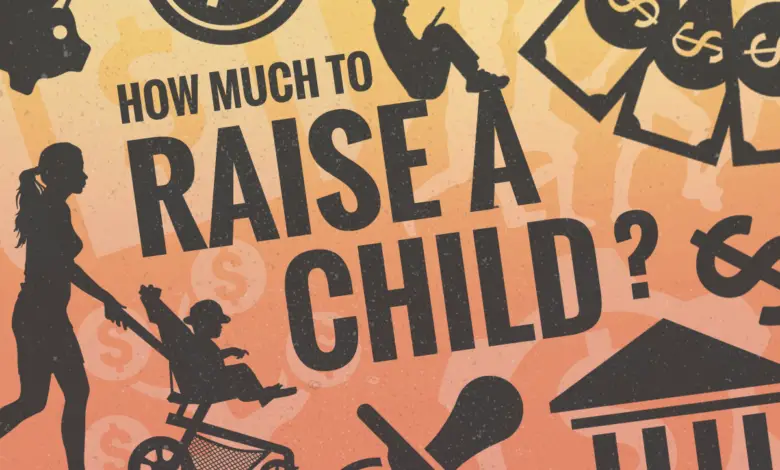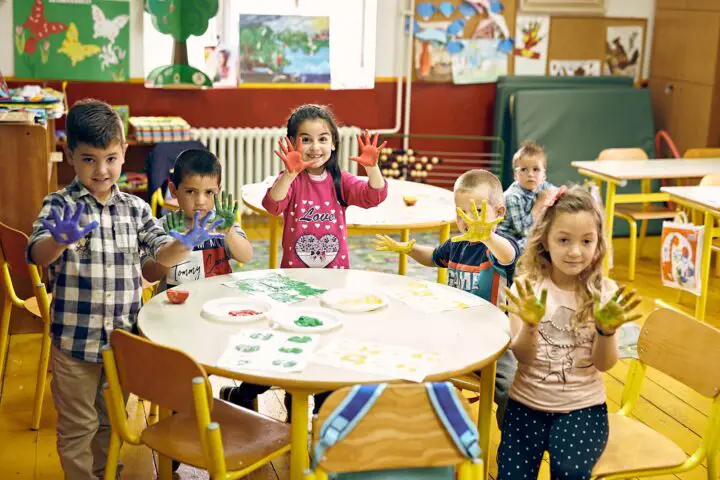How the Cost of Raising a Child has Changed Over Time

Despite countless challenging times and occasional moments of helplessness due to the various temptations that life puts us in front of, raising a family and taking care of the little ones is truly the most beautiful responsibility that a human being could ever have. The costs and financial resources needed for a decent life have always varied depending on the time in which the families lived and the circumstances of looking after the youngest ones.
Today, this whole concept differs in numerous ways from the former perception that prevailed because the standards were modified and new times brought new challenges and things to worry about. Aspects for which former middle-class families didn’t have to set aside a single cent today are understood as the highest paid ones – and all that for the benefit of the kids.
Therefore, the question arises – how much has the way of financing the family and their needs changed in recent decades? Do people care more about the material well being of their children now, or is it just the surface that hides other issues not related to finances? What’s different now and have the expenditures increased or decreased with the years of the new millennium that are behind us?
We’ll emphasize a thing that is somewhat obvious. In order to draw the right conclusion, a certain type of comparative analysis which indicates a concrete increase or decrease in the cost of living of families with children needs to be performed. You may already have some assumptions of your own – if that’s the case, then let’s check how much they agree with the results of our research.
Food

As far as this field is concerned, you may be surprised by the fact that the situation here isn’t so drastically different. In the 1960s, groceries were more than twice as expensive as the ones we buy today, including the situation caused by inflation and crises. The balance was made by homemade food produced within the household, but the maintenance of animals and the provision of crops also brought additional costs. Annually, the family of four used to spend nearly $50,000.
Basic necessities such as milk and bread are less expensive today than those bought by our ancestors – of course, when they didn’t make them themselves. Although in recent years we can notice much lower prices, adjusted to an average standard, one can’t escape the fact that many foods that weren’t popular then have entered the game and are now consumed on a daily basis. This includes fast food, fizzy drinks, or snacks which all together costs about $43,000 a year.
Child care and day care

You probably know that kindergartens haven’t really existed since time immemorial. In the middle of the last century, education used to start in the first grade of primary school – before that, the child was mostly kept in the family circle. Wealthy individuals were able to afford help at home even then, so their maids, in addition to cooking and cleaning, also took care of the kids and played with them at a low price or in exchange for accommodation. Middle-class families couldn’t boast of that kind of luxury, but mothers, as well as other family members, were in charge of spending time with the kids and raising them.
Why mostly mothers? Once upon a time, while feminism hadn’t taken root yet and while men were still the primary breadwinners in the house, the only job of women, in addition to maintaining the household, was training their children on the right path and looking after them. Therefore, the costs in terms of helping to care for the youngest almost didn’t exist.
If we look at today’s situation, we’ll notice that the situation has changed drastically and that the average figure that a couple of parents cash out for child care is barely less than $20,000, and in the case of special conditions, even more. Wow, what a difference, right? The mothers-housewives are getting replaced by professional and trained nannies and teenagers who earn pocket money in this way. Take into consideration $500 a week – it’s the salary of the average nanny when she works full-time. Multiply that by the number of weeks in the year – are you dizzy too?

Kindergartens have flourished in the meantime, but that hasn’t really affected the parents’ wallets so positively. Due to the lack of time and business obligations, they often pay extra for the services of additional daycare even outside regular working hours, which represents another solid cost.
Schools and universities
Did you know that the average American family spends almost $38,000 a year on children’s education? The amount of cash given wasn’t nearly as much a few decades ago – the maximal expense of this nature was $5,000. Why such a gap?
If you look around, you’ll realize that private schools and universities are everywhere. Tuition fees are rather huge, but many students still opt for them because of certain benefits. Due to the financial situation, public schools and universities were often the only choices for kids, and even then the money used to go in favour of additional education at home and the purchase of study books. Private institution’s attendance was a luxury at the time, and only children of wealthy parents could afford it.
However, when we talk about this sphere, we can’t neglect innumerable additional activities that children enroll in nowadays. Whether it’s sports, art, summer camps, or similar activities, each and every one of them requires a certain amount of financial resources. Here lies the answer to the question of why the above-mentioned amount increased as much as ten times. Also, attractive programs such as Loved.com, focused on implementing investments in children’s future, have some quite good and appealing points that shouldn’t be missed.
Healthcare

In the 1980s the prices of medical expenses and healthcare began to rise drastically, which was justified by the implementation of various health insurance policies. Families began to get acquainted with this phenomenon and many of them decided to give it a go. The figure now was three times higher than it used to be at that time – around $8,000.
Of course, this is closely related to medical advances, new machines and devices, and more progressive treatment methods. Therefore, insurance policies require even more money today. Single labor costs nearly $11,000, with the exception of a cesarean section for which parents have to add $7,000 more. So, the process of giving birth to a child is already so much more expensive – can you then imagine the gap between treatment now and earlier? Since many families today are able to afford insurance, they always choose this option because of the benefits, hoping that their children will need it as little as possible, but still keep it close to them as a precaution.
House necessities, meals, literacy… All these things tend to be much more costly today, and this analysis has shown that in a simple and comprehensive way. Who knows what tomorrow brings and what awaits us – but in the end, every period in history has its own statistics. What doesn’t change is a huge number of kids waiting to be born and raised in diverse conditions, therefore we should do our best to use the current conditions in their favour – and in ours, as well.

